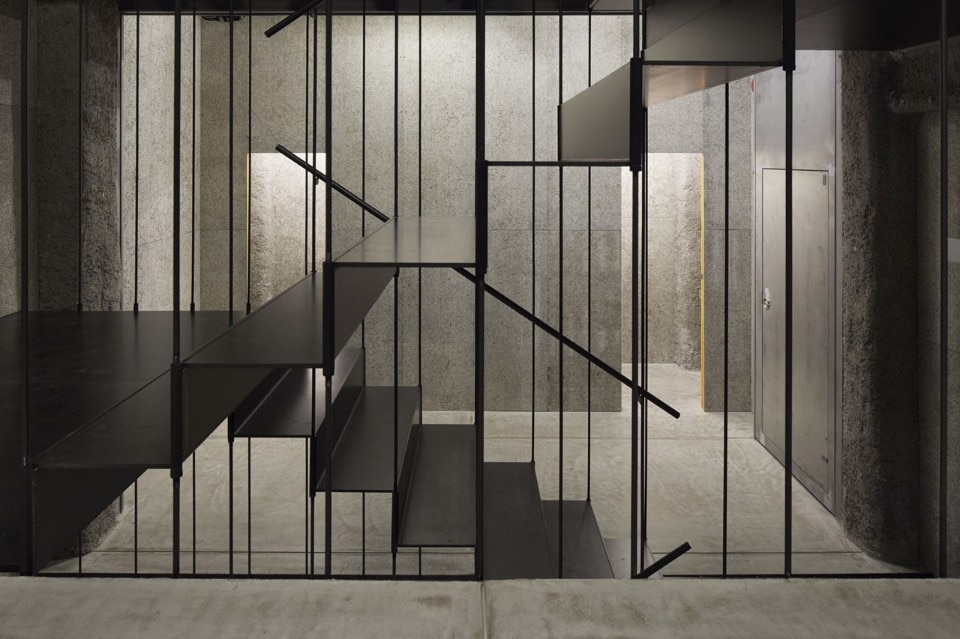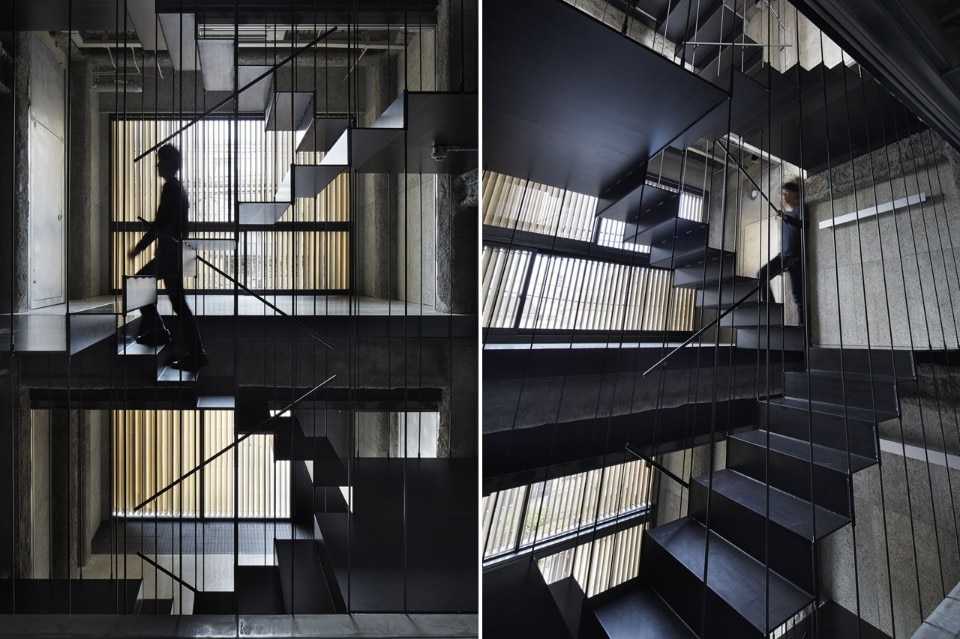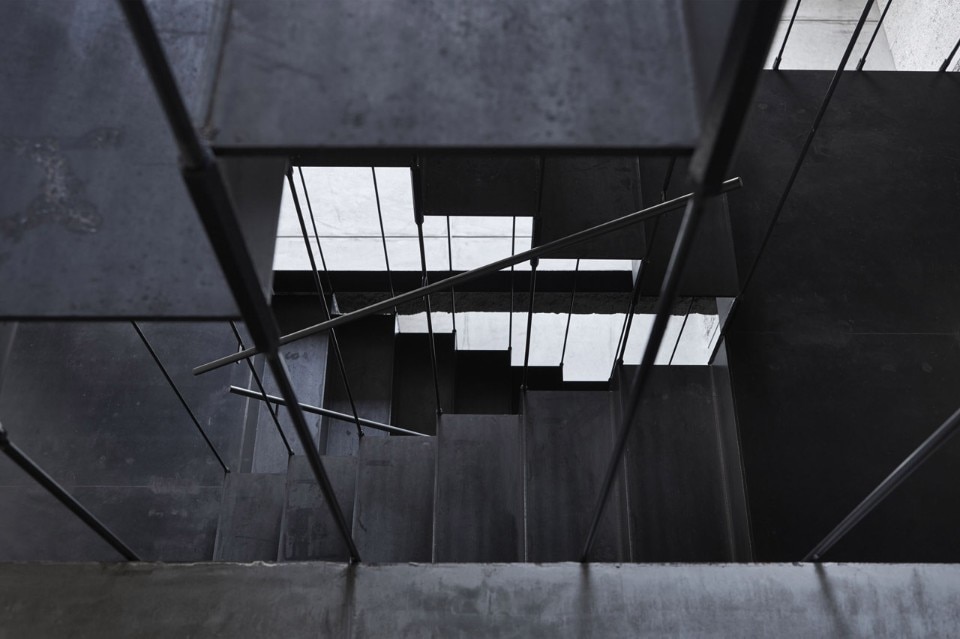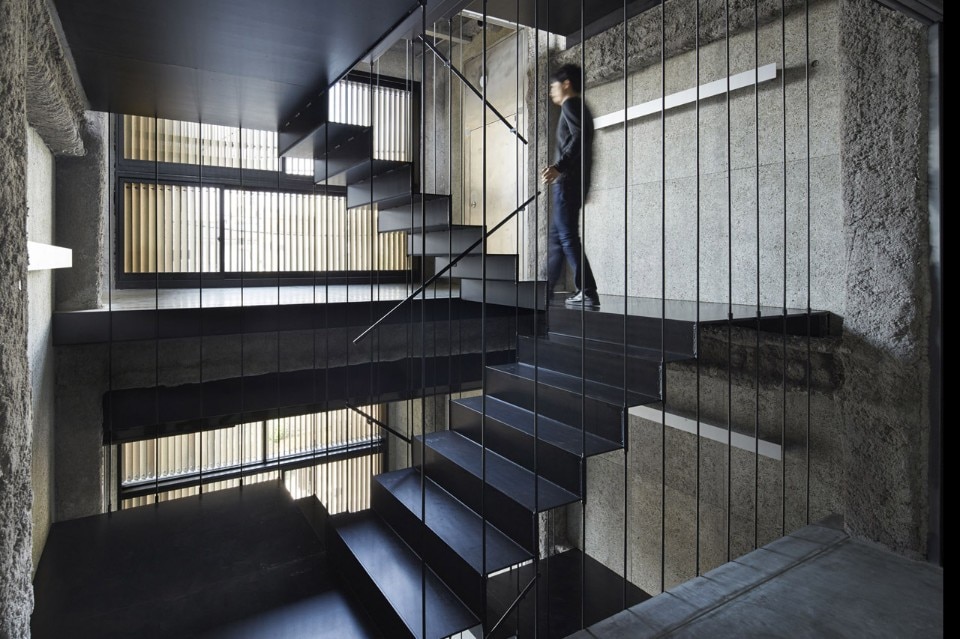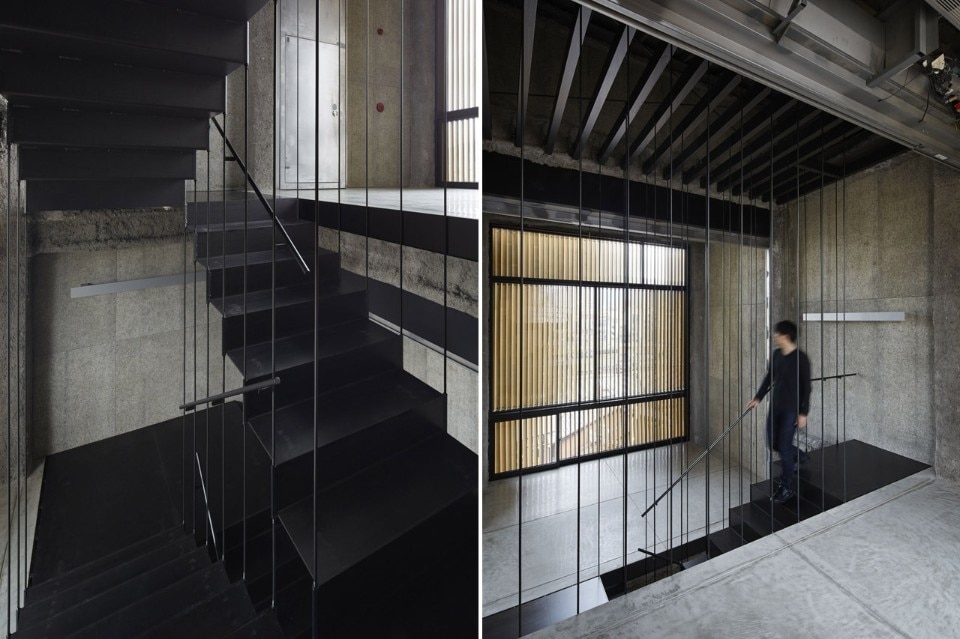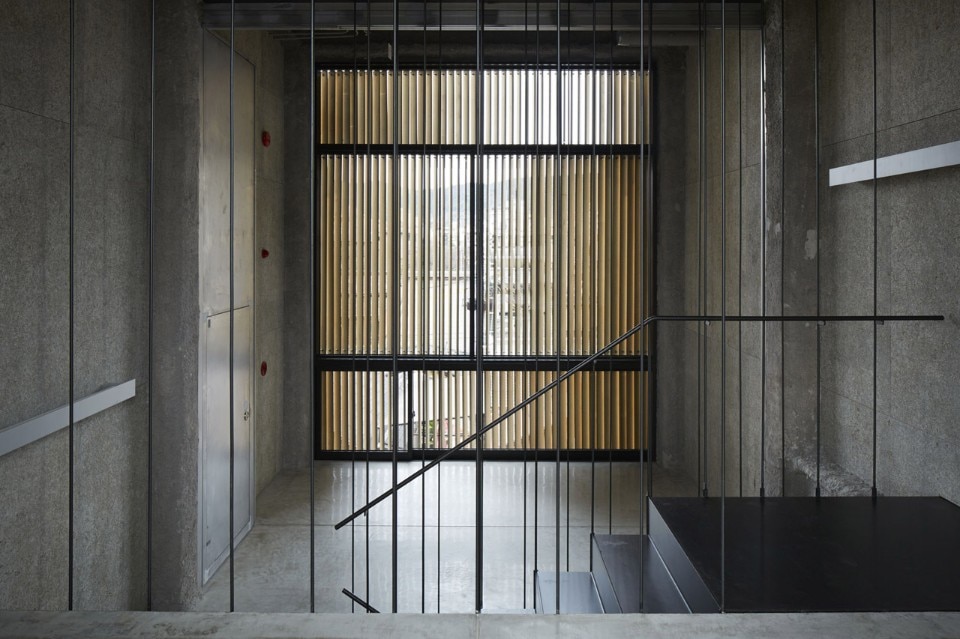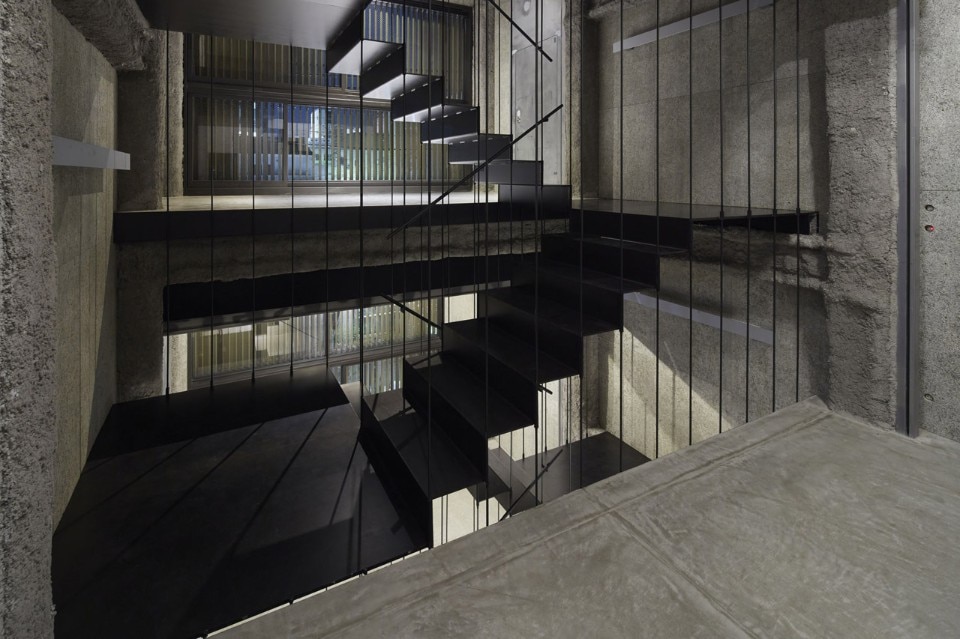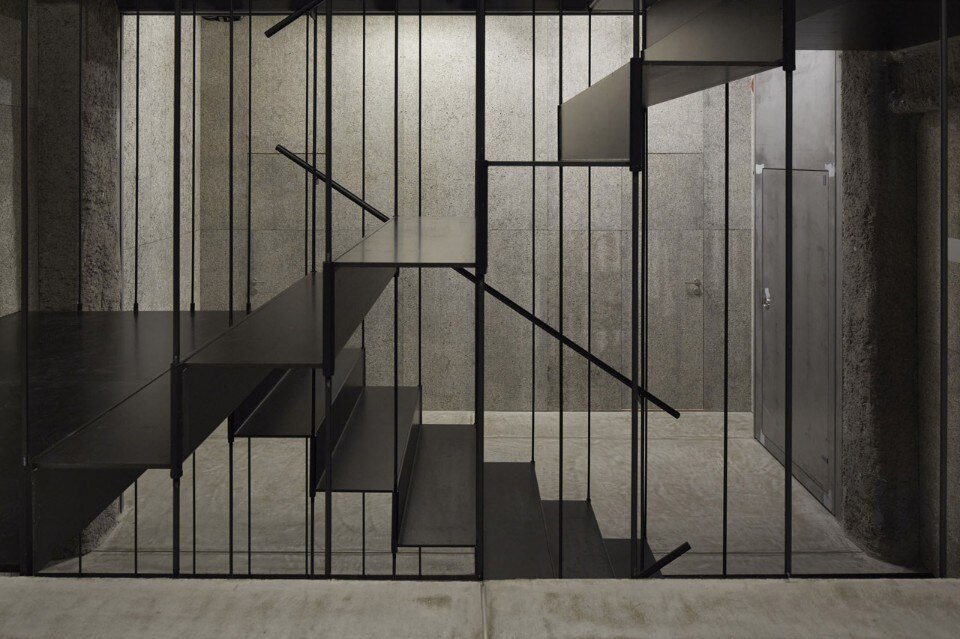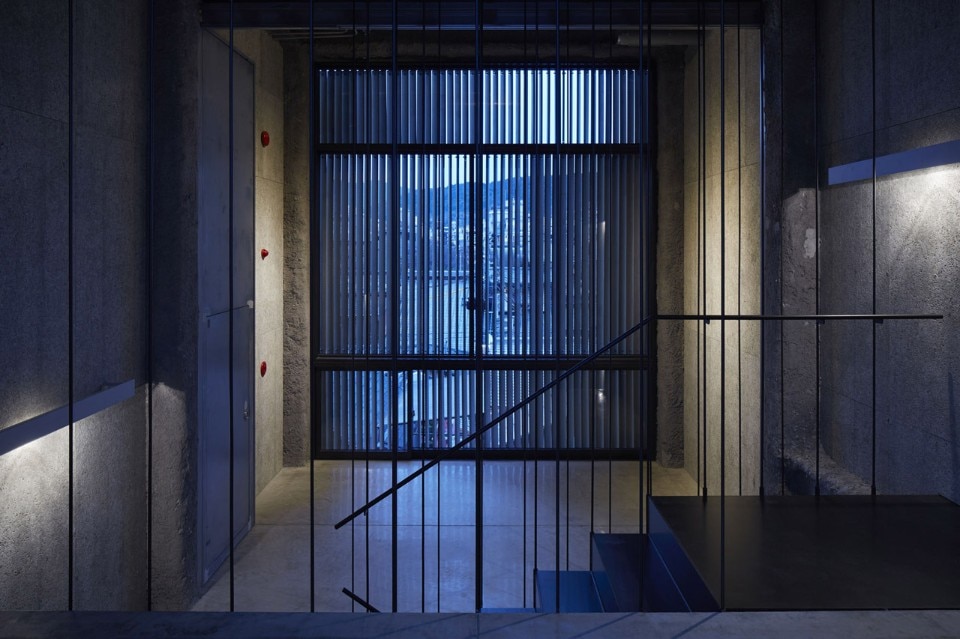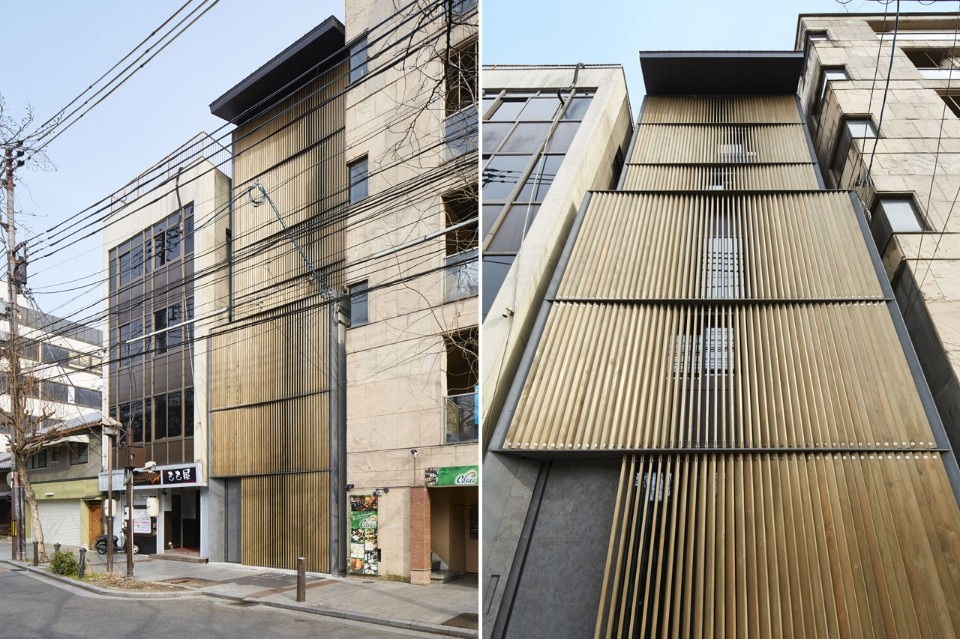
As the eastern part of Pontocho looks onto Kamogawa, Kyoto’s major river, creating a unique scenery, urban regulations have not allowed this area to change much for centuries: it is still a fabric of small, low houses.
To the west, Kiyamchidori runs parallel to Pontocho’s main spine. Here, regulations have loosened over time resulting in an eclectic array of buildings up to six storeys tall. K8 is on a narrow site perched between two such tall buildings representing the days when the area was declared open frontier and quick money was put in erecting (at best) nondescript mediocrity.
Where Pontocho is experienced as a horizontal sequence of encounters, K8 is the translation of that experience into the vertical. In foregoing the ubiquitous elevator, which – being a secluded tube penetrating unrelated layers – divides as much as it connects, K8 is in fact one coherent, continuously varying space stretching over eight levels. Here, the evening evolves as a gradually changing course of events, from aperitif on ground level to digestif on the top overlooking Pontocho towards Kamogawa, the staircase linking a diversity of in-betweens.
As a homogeneous yet continuously changing surface, the facade creates an ambiguity often found in Kyoto’s architecture. Through their gradual rotations, several hundred wooden louvers evoke a sense of motion, as if the building itself were continuously engaging with its environment. The building’s interior is more concealed than revealed. Facing the building, one is left without a precise answer as to how many floors or how deep the building might be. Towards the sides, the louvers are rotated to a degree that they almost appear to be a solid, albeit nuanced, wall. Towards the middle, varying degrees of transparency give subtle hints about the inside. Walking by further sets the facade in motion, as if the building itself were moving around those who pass by, engaging them by revealing glimpses of the inside in varying depths.
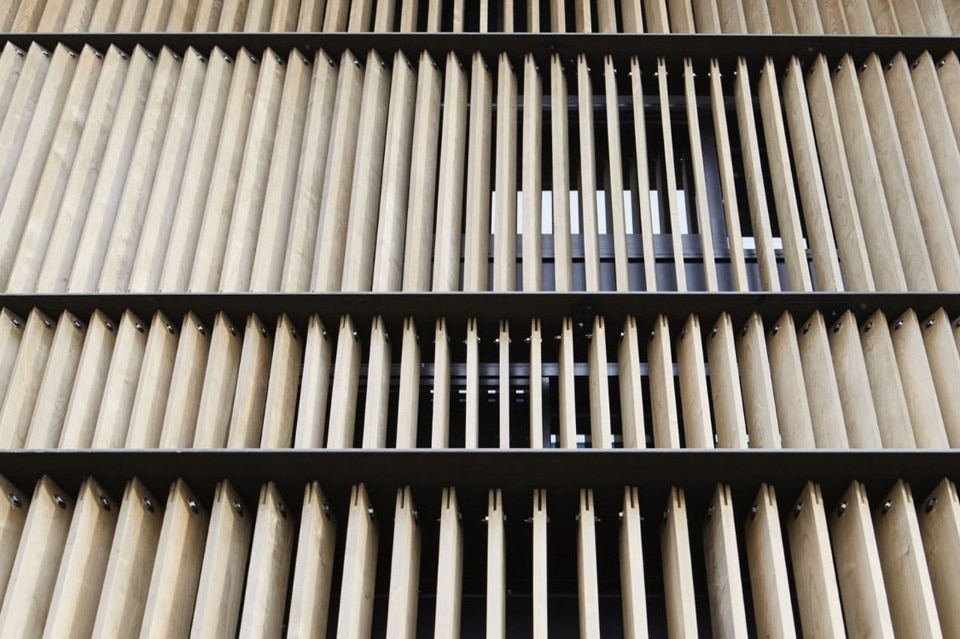
K8 in Kyoto, Kawaramachi, Kyoto, Japan
Program: restaurant
Architects: Florian Busch Architects
Project Team: Florian Busch, Sachiko Miyazaki, Suguru Takahashi, Akira Miyamoto, Antoine Vaxelaire, Renee Reder, Oliver Pershav, Katie Colford (intern), Shiori Sageshima (intern), Anne-Marlene Rüede (intern), Kayo Nakamura (intern)
Structural engineering: OAK (Masato Araya, Tomonori Kawata)
Contractor: Mugishima Corp.
Area: 155.98 sqm
Completion: 2015


